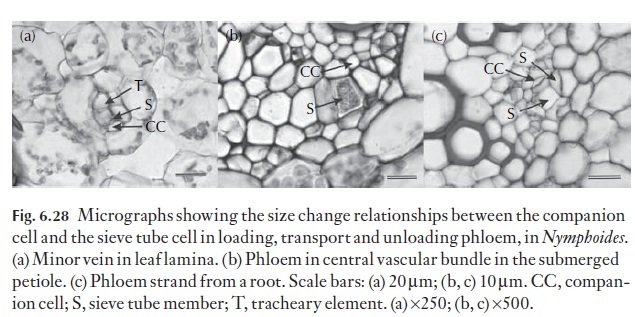Chapter: Plant Anatomy:An Applied Approach: The leaf
Unloading phloem in leaf
Unloading phloem
Ma and Peterson (2001) have shown that in Allium roots the highest plasmodesmal frequencies were detected at the metaphloem sieve element– companion cell interface and all other interfaces had much lower plasmodes-mal frequencies. In the pericycle, the radial walls had high plasmodesmal frequencies, a feature that could permit lateral circulation of solutes, thus fa-cilitating ion (inward) and photosynthate (outward) delivery, and additional-ly, if the plasmodesmata are functional, a considerable symplastic transport pathway exists between the exodermis and pericycle as well.

Developing seeds are net importers of organic and inorganic nutrients and nutrients enter seeds through the maternal vascular system at relatively high concentrations in the phloem. They exit importing sieve elements via interconnecting plasmodesmata. During subsequent symplasmic passage, they are sequestered into labile storage pools within vacuoles and as starch. High densities of plasmodesmata could support symplasmic delivery of ac-cumulated nutrients to underlying storage cells where polymer formation (starch, protein) may take place .
Related Topics